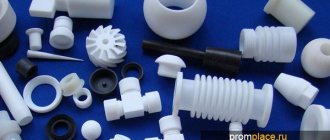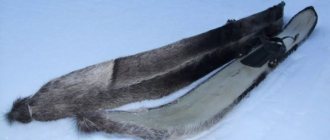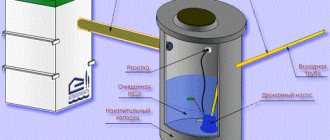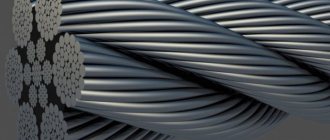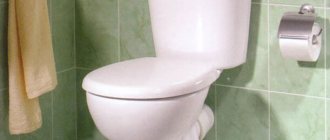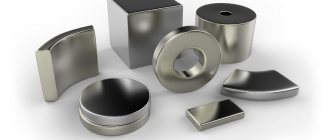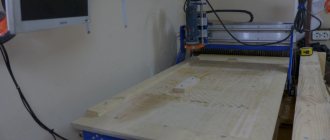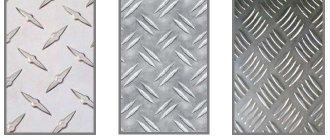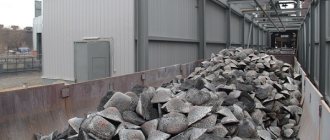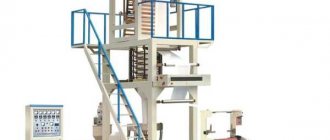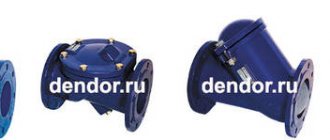Types and types of springs
As previously noted, various types of springs are manufactured, all of them have their own specific characteristics that should be taken into account. Classification is carried out according to design characteristics. The following types of springs are distinguished:
- Screw. This variety is found in various mechanisms and is installed almost everywhere, for example, in cars. In this case, the following types of automobile springs are distinguished: cylindrical and conical, as well as with variable diameter. It should be taken into account that the product in question is represented by coils with the same and different diameters. A fairly common sign of application is the installation of spring shock absorbers, which are an important element of the car’s design. In some cases, a spring with a variable pitch of turns is installed.
- Torsion bars. In many ways, this version of the design resembles the previous one, but at the same time it works on torsion and bending. This form of the spring allows it to be installed as the main element of the suspension. The same mechanism is installed to open and close doors and ensure the functionality of counterweights.
- Spiral. This design resembles a flat type of spring that is twisted in a spiral in the form of a ribbon. The device is used as an element for storing kinetic energy, the release of which occurs in certain cases. An example is a wall or wrist clock, as well as other similar mechanisms.
- Disc-shaped. When considering the classification of springs, attention should be paid to the disc version. This version does not resemble the standard type of spring, since it consists of several consecutive disks connected to each other. The main advantage of this embodiment is the low degree of deformation even in the case of high load. Often installed in the case of safety valves.
- Wave. This type is represented by a metal tape curved along a sinusoid, which smoothly winds in a spiral. The advantage is their relatively small size; due to their high precision, they are used to create support units, bearings and fittings that block the flow if necessary.
- Gas. This design option is placed in a special category, since the manufacture does not use wire, but gas together with a piston. The high cost is determined by the complexity of the design, but it can dampen vibrations and loads with high efficiency.
When considering everything about springs, attention should also be paid to classification according to the nature of the load. Based on this feature, the following execution options are distinguished:
- Bend. This type of spring changes its dimensions insignificantly when exposed to force. Torsion bar packages are common, as well as disc type springs.
- Torsion spring. This option is characterized by its small size and is installed during the manufacture of clothespins.
- Compression and stretching. This type of spring is very common; when the required force is applied, the linear dimensions change. Today it is found in a wide variety of mechanisms. Compression and tension are used in the creation of industrial and household equipment.
The information above indicates that there are simply a huge number of different types of springs that are used as the main elements of various mechanisms.
Types of springs
The spring serves to accumulate and return (transmit) the energy it receives as a result of changes in its physical state under various types of load. In general, the process of energy recovery occurs at the moment of return to its original state after deformation under load. Springs are made from any materials that have the necessary elasticity and strength. The most commonly used are various metals (carbon, alloy steel, alloys: bronze, brass and others), plastic, and other composite materials that can store and return kinetic energy.
A spring is a necessary element of almost any mechanism in which it is necessary to convert mechanical energy into kinetic energy (for example, a spring in a watch mechanism), an important component in the design of machine tools, engines, and various devices. In some mechanisms, the number of different types of springs can reach tens and hundreds, on which the reliability and quality of operation of the entire unit depends. They perform different functions depending on the type and shape.
Elasticity allows the application of compression or tension force in the transmission (thus, the spring is an element of the design of the brake, clutch, gearbox), ensures the operation of shock absorbers to eliminate the consequences of shocks, and the consistent operation of valves in internal combustion engines. Elasticity is also responsible for converting the mechanical energy of compression-tension in the operation of a mechanical engine. In measuring instruments, GOST requires the use of springs made of the highest quality materials. Only they can provide the necessary accuracy.
There are several different classifications, which depend on the type of load on it, the shape of the spring, and stiffness parameters.
Depending on the type of impact, they are divided into groups: those working in compression-tension, those working in bending, and returning to their original position after torsion.
The appearance (design) of the spring is usually determined by the area of application: twisted (screw) are used where compression-tension is most often necessary (they are cylindrical and conical), torsion, plate (or flat), disc, spiral. An important parameter of any spring is its stiffness. It can be variable or constant.
The distribution of springs by type has recently become less relevant, since the area of application, rather than the type of spring based on its main characteristics, has become more important. This means that different types of springs can be used as suspension or transmission elements for various vehicles. The same can be said about various measuring instruments in which different types can be used.
Similarly, a wide variety of springs are used in electrical engineering and machine tools.
The widest range of springs is presented in agricultural machinery - almost all types are used there.
The situation is the same in the automotive industry - almost all possible options are used in a car - from the body to the engine, from the smallest to the largest (of course, in car proportions).
Furniture springs differ mainly in the place of fastening - because these are interior items. Therefore, appearance (design) is important for elements that are not hidden inside. Galvanized springs are usually used.
Spring wire
Spring wire, wound in a certain shape, serves as the main material in the manufacture of the product in question. It has certain properties, for example, the difference between stretching and compression. Among the features we note the following points:
- During manufacturing, a certain alloy is used, which is characterized by special properties. An example is corrosion resistance, low susceptibility to variable loads.
- The main parameter can be called diameter. It can vary over a fairly wide range and determines the basic properties of the resulting type of spring.
Spring wire is produced by rolling.
At the same time, to improve the basic properties, heat treatment is carried out, which can significantly increase hardness, wear resistance and other qualities.
On sale you can find spring wire, which is used to create the product in question. For this purpose, special winding and centering equipment is used.
Design features and principle of operation of spring tensioners
In order to tighten the spring, it is necessary to apply force to the outer coils. You can perform this action in several ways:
- Using a threaded connection (similar to screw type jacks).
- Using a hydraulic cylinder.
- Modern tools use the latter method to tighten springs.
The simplest screed model consists of three elements:
- a rod with a thread applied to it,
- spring grip with thread or nut,
- additional grip under the spring.
The stop with a nut or thread, being twisted, approaches the stop that maintains a static position, as a result of which the spring is compressed. As an alternative to a threaded rod, a modified telescopic or hydraulic cylinder system can be used in the tie design. The hydraulic cylinder type is used primarily in professional grade ties.
Centering the springs
At the time of production of the product, a centering procedure is carried out. This is only possible with the use of special equipment. Among the features we note:
- Almost all types of springs have a central axis, which largely determines the performance characteristics of the part.
- When the center shifts, there is a possibility of force being transmitted at the wrong angle.
- During long-term use, there is a possibility that the axis location will shift. Servicing some mechanisms involves returning it to its previous position.
It is almost impossible to carry out the centering procedure without a special device. This is due to the fact that the wire used, after assuming its position, retains it throughout the subsequent period.
Hinged installation of springs
Quite often, various types of springs are hinged. An example is the creation of a car suspension, which is designed to stabilize the body and dampen vibrations. The features of this application are the following:
- Centering in the required position is ensured.
- The likelihood of the center of the axis shifting is reduced, after which it is necessary to carry out the centering procedure.
- It is possible to carry out periodic maintenance of the structure and replacement of the element in question.
Hinged installation is found in a wide variety of situations. In this case, it is important to choose the most suitable type of spring, since not all are suitable for the case in question.
Spring calculation
Cylindrical types of springs, which are represented by a certain combination of turns, have become quite widespread. The principle of bending is somewhat different from compression, which is worth considering. Among the features of the calculations carried out, we note the following points:
- An axial tensile force is exerted on the body. It is worth considering that there is also a transverse force; the moment is calculated using the formula: Mz=FD/2.
- The moment coincides with the plane of the pair of forces. In this case, the normal cross section of the turns is inclined to the plane at a certain angle.
- At the time of construction, the projection of force on the axes should be taken into account that they are equal to moments.
- The calculations also take into account the strength and reliability condition.
- The diameter of the wire is calculated, as well as the required number of turns and the total length of the spring.
The main indicators are calculated in order to select the most suitable type of spring.
What types of compression springs are there?
It became possible to manufacture springs from wire of square and rectangular sections; conical and barrel springs
In 2015-2018, further development of the main production is planned: -Construction of additional areas for the main production. -Purchase, for the purpose of updating, of new high-performance winding equipment.
Quality and technology
Twisted springs are classified depending on their shape, manufacturing method, winding direction, purpose and nature of work. According to their shape, springs are mainly divided into cylindrical, conical, shaped, flat and spiral (Fig. 53). Cylindrical, conical and shaped coil springs are divided according to the direction of winding. For springs with right winding, the coils are laid clockwise, and for springs with left winding, the coils are laid counterclockwise. According to the nature of the action on springs, loads are divided into periodically acting and constantly acting. Periodically acting loads include loads experienced by springs at certain intervals. Such loads are tested
There are springs in the lever bolt mechanism, in the ratchet mechanism, in the pawls, in the knurling of the gun, etc. Constantly acting (with a smooth increase or decrease) include loads to which the springs are continuously exposed. The spiral springs of watches, dynamometers and other mechanisms also experience such loads.
Depending on the type of load, tension, compression, torsion and bending springs are distinguished. Springs operating in tension are subjected to longitudinal-axial load, i.e., under the influence of a load, they are stretched along the axis of the spring. When the load is compressed, the spring takes its original position - it is compressed. Tension springs can be divided according to the nature of the design of the ends into two main types: springs without rings, in the ends of which there are special screw plugs (Fig. 54, n), and springs with various rings (Fig. 54, a, b). Screw plugs and spring rings are intended for fastening springs in structures (see Fig. 54, c). Tension springs are manufactured in cylindrical, conical and barrel-shaped shapes. Tension springs are usually made from wire with a diameter of 0.2-8 mm; sometimes these springs are made from wire with a diameter of more than 10 mm. For example, tension springs are made from wire with a diameter of 19-20 mm for pantographs of electric locomotives, wing lift devices for combine harvesters, and agricultural machines. Compression springs are subjected to longitudinal-axial load and are compressed under its action. When this load is removed, the spring returns to its original position - it straightens out. Compression springs (Fig. 55), according to the type of supporting planes, can have unpressed and pressed sharpened or ground outer turns. The latter are obtained by careful processing; their supporting planes must be perpendicular to the axis of the spring. To create a reliable support, each end coil along its length is pressed against adjacent coils, pre-processed and finally ground so that a support plane is formed along the length of the coil from the end, perpendicular to the axis of the spring. The polished surface is shown in Fig. 55 with shading. To reduce the amount of machining in this operation, large-diameter workpieces are pre-pulled under a hammer or on rollers. Pressed and practically do not work and are called the first turns.
Spring stability
The product in question is characterized by a fairly large number of features. A fairly common characteristic is related to the immediate stability of the spring during installation. Among the features of this indicator, we note the following points:
- At the time of designing the mechanism, attention is paid to stability, which is considered taking into account the use of internal and external guides.
- You can often encounter a situation where a conical version is used to increase the stability of the mechanism during use and reduce the size in the compressed state. This is due to the fact that in a compressed state, the type of spring in question has a height equal to the diameter of the wire used. All rings are nested inside each other, which resembles a spiral.
A distinctive feature is that the conical type of the product is characterized by a purely nonlinear characteristic due to a uniform change in the diameter of all turns.
Resonant vibrations
A fairly high ductility index of the turns determines that there is a high probability of a resonant oscillation occurring. This situation is associated with quite a large number of dangers, as it can lead to a decrease in the strength of the mechanism. The features of this parameter include the following:
- Occurs in the absence of additional fastening elements.
- Oscillations occur when exposed to a variable load.
- Due to resonant vibration, there is a possibility that the force will not propagate along the axis. This situation causes displacement and deformation of individual turns.
Spring stabilization is carried out in a variety of ways. It is worth considering that resonant vibrations increase as the length increases. In this case, the greatest deviation is observed in the central part of the turns.
Composite springs
Composite type springs are used in cases of heavy loads. Among the features we note:
- In most cases, the product works in compression. In this case, all elements have the same length.
- The composite version is represented by a combination of several, which have different diameters of turns and are inserted into each other. Moreover, they all have a common axis, which ensures uniform load distribution.
- To reduce the likelihood of coil jumps, which prevents compression from occurring, they are performed in the opposite direction of twisting.
This version has become very widespread and is installed on cars and other equipment. Do not forget that by increasing the number of springs the cost of the product increases significantly.
Note from LLC “PRUZHINA. RU"
A spring is an elastic mechanism that has the property of independently restoring a shape that has been disrupted as a result of the application of force to the spring or its deformation. An analogue of a compression spring can be gaseous substances and other materials (for example, air in car cylinders), liquid (oil in hydraulic shock absorbers) and solid (springs made of metal tape). But if we talk about mechanical springs, then we mean springs made of metal - spring steel, spring stainless steel, bronze, brass, and nowadays springs are also produced using reinforced plastics, rubber and special alloys.
The greatest expansion in production has been the production of springs, called twisted or screw. And the following types of springs are distinguished: spiral, disk and flat, otherwise called lamellar. Coil springs have the design of a flat metal strip coiled into a curl. Most often used in watchmaking as a winding spring. Flat or plate versions of the device are used in automobile suspensions. A leaf spring is assembled from several flat springs fastened together. Disc springs refer to a set of metal discs where multidirectional forces are applied to the circumference of the largest disc and to its center. A good example is the lock washer. Its work is based on the fact that the washer is pressed against the fastening parts and, trying to straighten, does not allow them to move relative to each other.
The general definition of the concept of “spring” is a device that undergoes deformation under the influence of external forces on it and accumulates energy, which is consumed during straightening of the spring.
The functions of springs are to transmit movement and maintain a certain distance between fasteners. These functions make the production of springs necessary in most industrial and mechanical engineering sectors. The principle of operation of springs is described in Hooke's law, named after the English physicist R. Hooke (1635 - 1703). This law states that the deformation of a spring and the forces causing it are proportional. The greater the force applied to the spring, the greater its deformation.
But this law works as long as the yield limit is not exceeded. This term refers to the maximum level of stress followed by the destruction of the molecular structure of the material from which the spring is made. Afterwards, the deformation becomes irreversible and the spring begins to collapse. In the production of springs, most materials do not have a precisely defined yield strength; the term “conditional yield strength” is applied to them.
The vast majority of modern cars are equipped with shock absorbers and springs. In some cases, these elements are combined into a single block. Considering the loads the shock absorber and springs are exposed to daily, periodic replacement of parts is a necessary condition for continued comfortable and safe operation of the vehicle. At the same time, replacing compressed springs is characterized by the greatest complexity and risks. Spring ties allow you to minimize the threat when performing relevant work and achieve the desired result with the least effort.
Conical springs
As previously noted, to significantly increase stability, a conical spring has recently been often used. It is characterized by the following features:
- In general, we can say that the product as a whole resembles a cylindrical version.
- Each subsequent turn has a diameter smaller than the previous one. That is why this type of spring is characterized by a large diameter of the first turn, since the rest are inserted inside.
- Another important point is the increased resistance of the product to displacement. This is due to the fact that the turns fit into each other, and the distance between them is significantly reduced. Increased stability is something that is required quite often.
- This version is installed in the case when a minimum length of the product in a compressed state is required.
This type of spring is characterized by difficulty in production. This is why the cost of the product increases significantly.
Prismatic springs
Prismatic springs can also be installed. This embodiment is characterized by a fairly large number of disadvantages. The properties of the product include the following:
- The product has relatively low stability. During operation there is a possibility of twisting or bending under load. That is why, in most cases, guides are installed, which are placed inside and outside. The support largely follows the shape of the spring.
- Experts recommend using this option only when others are not suitable.
- In most cases, the axis of the turns is located on a prism, which resembles a rectangle with rounded corners.
Experts recommend using this type of spring only when others are not suitable. That is why they are not widely used and are used extremely rarely.
Types and features of springs
For hundreds of years, the spring has been a widespread element of various parts, devices and mechanisms. Currently, there are about twenty different types of springs. This article will provide brief descriptions of all the most basic categories of springs, and you can find out in detail about each specific category by following the link: https://kurskmk.com/catalog/izgotovlenie-pruzhin/. But all springs can be divided into two large categories: by type of load and by shape of the structure.
Categories characterizing springs by type of load
This category has four main types of springs:
- compression springs;
- extension springs;
- torsion springs;
- bending springs.
Compression springs are a classic type of spring that are needed in many designs and are designed to carry loads. Compression springs have design features that differentiate them by appearance, for example:
- twisted shape;
- conical shape;
- flat shape;
- cylindrical shape.
Tension springs are springs that are designed to relieve pressure on a structure, hold the load and relieve it. Such springs are very often used in the engineering industry and in everyday life. A typical application of a tension spring is in doors, where the spring serves as the mechanism that closes the door. Similar to compression springs, this type is also divided into shapes.
Torsion springs are a special type of spring that specifically engages with the element of rotation. The principle of operation of springs is that under the influence of a load, elastic deformation occurs (compression of the spring), after which energy accumulates, which will subsequently return the spring to its original state. Springs are divided according to the shape of the structure.
Flexural (or plastic) springs are mostly a plastic plate that stabilizes or cushions some element. Plastic springs are divided into the following types:
- single-layer;
- two-layer;
- multilayer.
Categories characterizing springs by design shape
According to the design shape, springs can be divided into:
- screw;
- shock absorbers;
- disc-shaped;
- spiral, etc.
Coil springs are springs made of thin metal wire or lath, which are necessary to store energy and subsequently convert it into forward motion. Very often used in mechanical engineering. They are divided by size, external parameters and material.
Belleville springs are a broad type of spring that are used to compress and hold large loads. Such springs are used in all types of industries. Such springs are distinguished by their long service life, huge stiffness coefficients, small travel under load, and the ability to be combined with other types of springs.
Conical springs are elastic elements used to hold, fix and evenly distribute the load. This type of spring is used in all possible industries. It is worth highlighting that this type of springs is installed in many electrical equipment. For example, in a TV remote control, AA batteries are secured using conical springs.
There are also many springs created specifically for a particular industry or a specific element, for example: springs for elevators, springs for crushers, railway springs, etc.
For a more detailed introduction to all types and types of springs, you can follow the link given at the beginning of the article, where you can also familiarize yourself with the areas of application, production methods, advantages and disadvantages.
Overall rating of the article:
Published:
2017.10.23
Updated:
2017.10.23
_ _ _ _ _ _ _ _ _ _ _ _ _ _ _ _ _ _ _ _ _ _ _ _ _ _ _ _ _ _ _ _ _ _ _ _ _ _ _ _ _ _ _ _ _ _ _ _ _ _ _ _ _ _ _ _ _ _ _ _ _ _ _ _ _ _ _ _ _ _ _ _ _ _ _ _ _ _ _ _ _ _ _ _ _ _ _ _ _ _ _ _ _ _ _ _ _ _ _ _ _ _ _ _ _ _ _ _ _ _ _ _ _ _ _ _ _ _ _ _ _ _ _ _ _ _ _ _ _ _ _ _ _ _ _ _ _ _ _ _ _ _ _ _ _ _ _ _ _ _ _ _ _ _ _ _ _ _ _ _ _ _ _ _ _ _ _ _ _ _ _ _ _ _ _ _ _ _ _ _ _ _ _ _ _ _ _ _ _ _ _ _ _ _ _ _ _ _ _ _ _ _ _ _ _ _ _ _ _ _ _ _ _ _ _ _ _ _ _ _ _ _ _ _ _ _ _ _ _ _ _ _ _ _ _ _ _ _ _ _ _ _ _ _ _ _ _ _ _ _ _ _ _ _ _ _ _ _ _ _ _ _ _ _ _ _ _ _ _ _ _ _ _ _ _ _ _ _ _
Spring characteristics
There are certain characteristics of springs that must be taken into account when choosing the most suitable version. The main ones are the following:
- Extension springs are extremely common. In this case, the elastic force is directed against elongation. A special feature is that there are practically no gaps between the turns in the zero position. A distinctive feature is the presence of special hooks, which are used to hook the product to the base and the load. With a diameter of more than 4 mm, special embedded hooks are often used; they are more durable, but at the same time less technologically advanced.
- The compression spring is installed. The parameters of a compression spring are largely related to the fact that there is clearance between the coils. Due to this, when exposed to influence, the turns are pressed against each other.
- Torsion. This design option is characterized by a small lift angle and a small gap between the turns. External load is transmitted using special hooks, which are formed by bending the ends.
In addition, when choosing, attention is paid to the quality of the springs. Other suitable properties are selected by performing appropriate calculations.
When considering the basic properties, you should also pay attention to the following parameters:
- The diameter of the wire. Almost all types of springs are represented by wire made from a certain material, which is wound along a certain trajectory. When calculating, the average diameter is often determined.
- Number of working turns. This parameter can vary over a fairly large range.
- Length of the product. Do not forget that the product may be in normal condition, as well as stretched or compressed. The most important parameter is the length in normal condition.
- Turning frequency. Knowing the length of the product and the number of turns, you can calculate the pitch indicator. This parameter also allows you to calculate the distance between individual turns.
- Working part length. This indicator has also become very widespread. Some types of springs also have special fastening elements that are not taken into account.
- Spring index. It is used to determine the curvature of turns. This parameter is selected depending on the wire diameter.
In addition, attention is paid to the type of material used in the manufacture of wire. In most cases, a special high-strength alloy is selected, which is used in the manufacture of almost all wires. In addition, depending on the characteristics of a particular case, silicon, chrome vanadium, high carbon and some other steels are used.
To manufacture a version that is used in a chemically aggressive environment, non-ferrous alloys should be used.
They are much more expensive than conventional ones, but have higher performance characteristics.
What types of spring ties are there?
Tools for tightening springs are divided into 2 main groups and can be:
- Stationary – intended for service stations.
- Portable – used by ordinary users.
From the point of view of the method of fixing the spring, couplers are divided into the following types:
- Central - have a threaded rod or hydraulic cylinder, which, when in working condition, pass through the central part of the spring. The spring is captured by special “cups” or disk stops.
- MacPherson - involve placing a threaded rod or hydraulic cylinder in operating condition outside the spring. Hooks or C-shaped stops, operating on the principle of a cantilever, are used as grips for the spring.
Central type couplers can only be used when servicing springs in standard suspensions, provided that the spring and shock absorber are located separately. In turn, MacPherson models can be used when working with combined shock absorber struts.
As for the type of drive, users can choose from a mechanical (in the form of a threaded rod) or hydraulic (with a hydraulic cylinder with a force of up to 2 tons) model. The latter option is intended for servicing trucks and agricultural machinery.
The range of tools and accessories offers the opportunity to purchase an inexpensive universal set. A set of tools may include the necessary components in the form of a working cylinder and clamps with locks, as well as special adapters, keys, and so on.
Springs, due to their elastic properties, are widely used in various machines and devices. They are intended for
- creating sufficient pressing force and tension between machine or device parts (in friction gears, clutches, brakes, etc.);
- vibration isolation and shock absorption (shock absorbers, buffers, springs, etc.);
- energy accumulation with subsequent use of the spring as a motor (clock and other springs);
- force measurements (in dynamometers and other measuring instruments).
According to their design, springs are distinguished:
- screw - cylindrical single-core, stranded and composite, conical and shaped;
- disc-shaped;
- flat spiral;
- leaf springs.
Helical springs are made from wire, usually of round and sometimes rectangular cross-section. Wire material for springs - steel (GOST 14959-69): high-carbon 65, 70, 75, manganese 65G, 55GS, silicon 55S2, 60S2, 60S2A, 70SZA, chromium-manganese 50HG, chrome-vanadium 50HFA, silicon-tungsten 65S2VA and silicon-nickel 60С2Н2А. For springs operating in a chemically active environment, wire made of bronze BrKMtsZ-1, BrOTs4-3, etc. is used.
Rice. 1
Helical cylindrical single-core springs (Fig. 1) are widely used in general mechanical engineering, since they are simple in design and convenient to install at the workplace. Springs made of round wire are used more often than others, since stress and deformation in them are distributed more evenly and their cost is the lowest compared to other springs. Springs made of square or rectangular wire are used only for high compressive loads. The purpose of helical cylindrical springs is different. Multicore screw (Fig. 2, a) and composite (concentric) springs (Fig. 2, b) are used for heavy loads in order to reduce overall dimensions, and conical (Fig. 2, c) and shaped screw springs are used, if necessary, to have variable stiffness . Disc springs (Fig. 2, d) are made up of conical disks (plates). They are used for heavy loads and relatively small overall dimensions, for example as buffers in various shock absorbers. Belleville springs are standardized by GOST 3057-79. The spring material is silicon steel 60C2A. Flat spiral springs (Fig. 2, d) are made from thin, high-quality carbon steel tape. They are used as windings to accumulate the energy of the plant, which is used in clock mechanisms, automatic weapons, etc. Leaf springs (Fig. 2, e) to increase the damping capacity are made of steel sheets of various lengths. Used for elastic suspension of cars, railway cars and other vehicles. Springs are made of silicon steel 60С2 and 60С2А.
Application of springs
The product in question is very widely used today. They are installed to perform reciprocating motion. Among the features we note:
- Relatively low cost. The cost of the product depends on the type of material used.
- Reliability in use due to the use of metal in manufacturing. Manufacturers carry out surface quality control at all stages of production. Cracks and other defects can cause a significant reduction in service life.
- Easy to install. Often fixation is carried out using special elements that are part of the mechanism.
- No maintenance required. The spring must not be lubricated or cleaned of dirt. The only important point is that the product must be protected from environmental influences.
When considering the purpose of such a product, it should be taken into account that it can have a wide variety of shapes.
In molds and dies
Quite often, the product in question is found in molds that are used on production lines. The key points of such mechanisms are the following:
- The spring absorbs the shock load. Otherwise, the device will not last for a long period.
- With the right choice of product, long-term operation of the device is ensured.
The mold works on the principle of extruding a certain surface by exerting a strong impact.
In firearms
If we consider the design of almost all weapons, we can note that most versions have a spring. It is designed to perform the following actions:
- Creating a counteraction that does not allow the shutter to move accidentally.
- Various types of springs are responsible for returning the shutter to its original position.
In firearms, the spring is also responsible for operating the magazine. It is required to feed the cartridge to the hole in the firing hole.
In constant force mechanisms
There are quite a large number of different constant force mechanisms. They are characterized by the following:
- Various types of springs can be installed. An example is the spiral design that is found in watches.
- The purpose of the mechanism can be very different, it all depends on the specific case.
In order to select the appropriate type of spring, appropriate calculations should be carried out. In this case, the main parameters are determined, for example, the diameter of the turns and the width of the wire.
Spring. Types and application. Stiffness and load. Peculiarities
A spring is an elastic, usually twisted element of a mechanism that is responsible for returning the applied force. Depending on the winding method, it works in the direction of compression or tension.
Types of springs
Based on their design, springs are classified into several types:
- Screw.
- Torsion bars.
- Spiral.
- Disc-shaped.
- Wave.
Screw ones are the most widespread. They are tube shaped. The element is obtained by winding a wire or rod onto a cylindrical template. After which the workpiece can be hardened and tempered. Depending on the winding method, the direction of operation of the spring depends. The presence of gaps between the turns allows it to be used as a compression element. An example is springs in ballpoint pens, car suspensions, and motor vehicles. When tightly wound, the spring is triggered by tension. Such elements have hooks on the edges of the eyelets. They are used in automatic door closing mechanisms.
Torsion bars have a similar design to screw bars. However, they are designed to respond to torsion and bending. The ends of such springs are made elongated for hooking during installation. When exposed to torsion, the element resists. Torsion springs, for example, are used in complex door closing mechanisms.
Spiral ones have the shape of a ribbon twisted into a spiral. This element is used to store energy. When installed in the mechanism, it twists, accumulating energy for unwinding due to its elasticity. These are the springs that are used in watch movements that operate in factories without the use of an electrical power source. They are also used in manual starters for chainsaws, lawn mowers for returning the cord back, etc.
A disc spring looks like a washer curved into a cone. Due to the elasticity of the metal, it resists compression. They constantly support nuts or other components. This is a rather rarely used element, but it is widely used in the steering rack mechanisms of most cars.
Hardness coefficient
A rather important parameter can be called the stiffness coefficient. It is indicated for each type of spring and is taken into account when carrying out a variety of calculations. The key points are the following:
- The stiffness coefficient determines how much force is required to compress and stretch.
- The parameter under consideration also determines what work can be done when using the product.
This indicator is taken from reference books. It is required to determine a variety of parameters, for example, the amount of kinetic energy.
In conclusion, we note that today almost all types of springs are common. They are used in the case of creating various responsible mechanisms. During the calculations, the main parameters are determined, as well as the force that is exerted on the body. An example is kinetic energy or oscillation period. All calculations can be carried out independently, for which various formulas are used.
